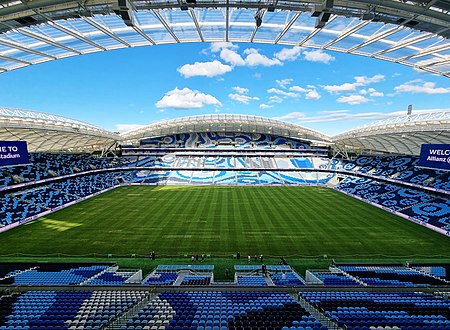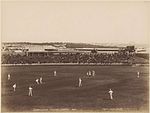Sydney Football Stadium (2022)
2023 FIFA Women's World Cup stadiumsA-League Men stadiumsMoore Park, New South WalesMulti-purpose stadiums in AustraliaNew South Wales Waratahs ... and 9 more
Philip Cox buildingsRugby league stadiums in AustraliaRugby union stadiums in AustraliaSoccer venues in SydneySports venues in SydneySydney FCSydney RoostersUse Australian English from December 2019Venues of the 2032 Summer Olympics and Paralympics

The Sydney Football Stadium, known commercially as Allianz Stadium, is a football stadium in Moore Park, Sydney, Australia. Built as a replacement for the original Sydney Football Stadium, it was officially opened on 28 August 2022. The ground's major tenants are the Sydney Roosters and South Sydney Rabbitohs of the National Rugby League, the New South Wales Waratahs of the Super Rugby, and Sydney FC of the A-League Men. It will be used as one of the venues for the 2023 FIFA Women's World Cup, 2027 Rugby World Cup and a regional venue for the 2032 Summer Olympics.
Excerpt from the Wikipedia article Sydney Football Stadium (2022) (License: CC BY-SA 3.0, Authors, Images).Sydney Football Stadium (2022)
Moore Park Road, Sydney Paddington
Geographical coordinates (GPS) Address External links Nearby Places Show on map
Geographical coordinates (GPS)
| Latitude | Longitude |
|---|---|
| N -33.889166666667 ° | E 151.22527777778 ° |
Address
Allianz Stadium (Sydney Football Stadium)
Moore Park Road
2021 Sydney, Paddington
New South Wales, Australia
Open on Google Maps







